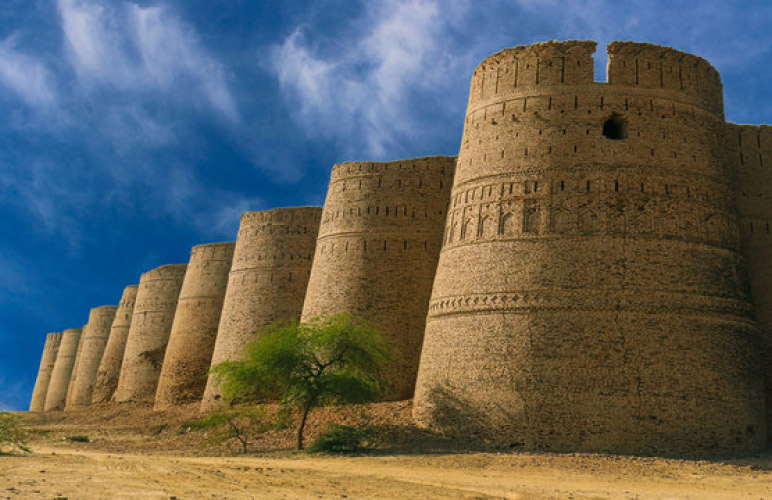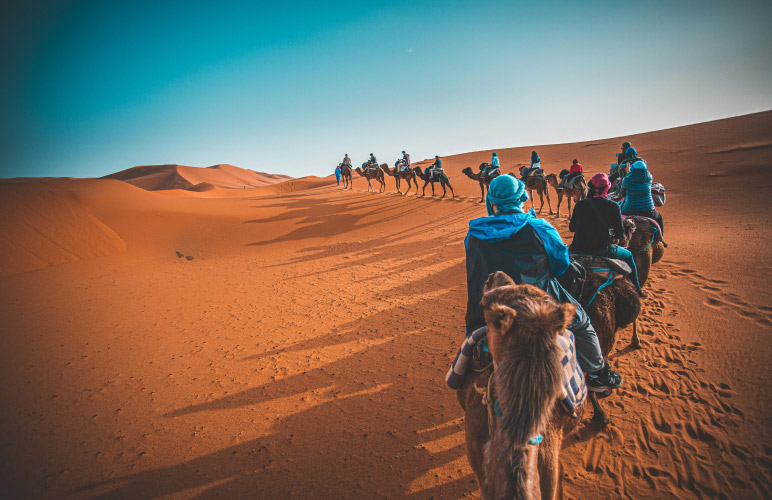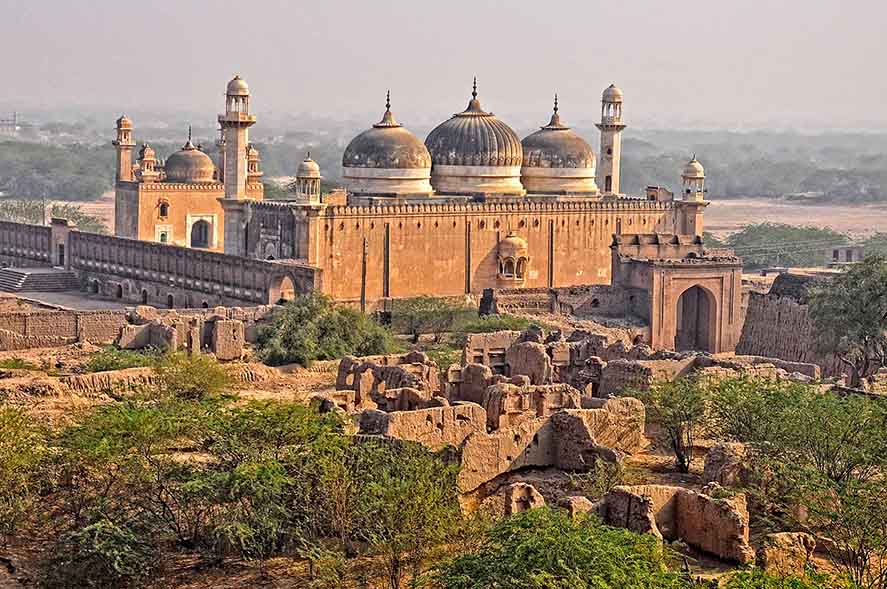In a Glimpse
Derawar Fort is a stunning legacy of the region’s rich past and is a popular historical tourist attraction amidst the Cholistan Desert situated in the province of Punjab of our beautiful Pakistan. The amazing architecture of Derawar Fort, which dates back to the 9th century AD and stands tall in the wilderness of the desert, reveals volumes about history.

So, let’s have a look at some fascinating facts about this old fort in Pakistan’s lower Punjab, which is located amid one of the country’s largest deserts.
Location
Bahawalpur, Punjab’s most prominent city, is around 130 kilometers away from Derawar Fort. The Ahmedpur-Derawar Fort Road leads directly to the fort. One of the fort’s primary attractions is its proximity to a dry riverbed, which is home to hundreds of other archaeological sites, including the mysterious Indus Valley Civilization’s ruins. An old river that once irrigated the entire area around the Derawar Fort has now dried up completely. Abbasi Mosque is a popular ancient monument nearby, as is a famous graveyard at Derawar Fort, which is said to contain the graves of the Holy Prophet’s companions (PBUH).
Architecture
Derawar Fort in the Cholistan Desert offers a very unusual architecture that makes it a distinctive tourist attraction in the region, with bastions reaching over miles into the heart of the Cholistan Desert. The fort’s walls are 1500 meters long and 30 meters high, with a circumference of 1500 meters. When you look closely at the fort, you can notice the creative carvings on the outer and inner construction of the building. However, time has taken its toll on the fort’s construction, but it still looks as spectacular as it did when it was first built.

History
Derawar Fort was built as a homage to Rawal Deoraj Bhatti, the sovereign king of the Jaisalmer and Bahawalpur region, by a Hindu ruler from Rajasthan, India. Historians believe the massive square bastion was first known as Dera Rawal, then Dera Rawar, and finally Derawar.
The foundation stone of Derawar fort was founded roughly 800 years ago, according to historical archives. Nawab of Bahawalpur Sadeq Mohammad Khan I took command in 1733 and renovated the Fort to its current state. The Nawab lost Derawar Fort about 15 years later. However, it was recaptured by Nawab Mubarak Khan in 1804 before British forces invaded and seized it.

However, they reclaimed the fort in the nineteenth century and remained a bastion in the area for a long time. The fort was maintained from time to time by the Nawabs of Bahawalpur and was in excellent condition during their reign.
The Abbasi Masjid, located near Derawar Fort, is one of the most important relics of the Nawabs of Bahawalpur’s golden period in the Cholistan desert region of southern Punjab.
The crumbling red-bricked fort, which can be seen for miles in the immense Cholistan Desert, is ringed by 30-meter-high bastions and 1.5-kilometer-long walls. Furthermore, some of the archaeological sites in the vicinity of the fort date back to the Indus Valley Civilization. Locals allege that one of the fort’s tunneled passages leads to an underground railway tunnel connecting Bahawalpur’s majestic Sadiq Garh Palace to Derawar.

Camping in the Cholistan has been incredibly popular among adventure seekers in recent years, giving the fort a new lease on life. People can not only sleep under the stars near the walls of Derawar Fort on these tours, but they can also sample the local cuisine and culture.
So Derawar Fort is an incredible historical tourist attraction and the best place to visit to know about our ancestor’s cultural heritage and traditions.
#ABBASI MOSQUE#AHMEDPUR-DERAWAR FORT#BAHAWALPUR#BEAUTIFUL PAKISTAN#BEST PLACE TO VISIT#CHOLISTAN DESERT#DERAWAR FORT#PUNJAB#SADIQ GARH PALACE#TOURIST/HISTORICAL ATTRACTION#TRAVEL GUIDE



